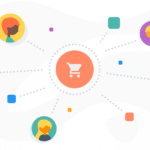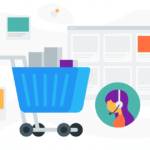What do e-commerce customers really want? Part II

In our previous article, we looked at what customers look for when they shop online. Apart from a wide selection of products, we mentioned personalized approach, special offers and high-quality customer support. Today, we will see what your e-shop should look like to be appealing to customers. Let’s see what you should focus on when designing your e-shop.
9 ways to improve your e-shop
1. Clear lay-out
One of the basic things that you should focus on is your e-shop’s layout. It may sound trivial, but even today, there are many e-shops that look like a pure chaos. Each section should be clearly visible, easy to access and well-arranged. When a customer visits your e-shop, they should have no problems finding what they are looking for, be it general terms and conditions, shipping fees and delivery times or a specific category of products.
2. Simple product search
It doesn’t matter how many types of vitamin C pills you are selling – if a customer is looking for a specific brand and you don’t have it in your offer, they probably won’t shop from you. Do you know what scenario is even worse?
- A customer is looking for a vitamin C product manufactured by a brand called HappyVitamins. They visit your website and search for HappyVitamins vitamin C.
- The search result shows 13 different types of vitamin C products, but not the one the customer was looking for, despite the fact that you have it in your offer.
- The customer will leave your e-shop and visit a different website where they find the vitamins and, what’s more, they are also attracted by a special offer of digestion enzymes and buy them as well. They have no reason to come back to your e-shop in the near future, because they believe that your e-shop doesn’t offer what they regularly shop for.
Imagine a different situation: a customer, let’s call him Peter, wants to buy a new smartphone. He isn’t looking for a specific brand, but he knows what parameters he needs – storage size, battery capacity and color. However, your e-shop doesn’t enable search based on these parameters, which is why Peter must browse through a myriad of smartphones that don’t even match his criteria. How much time before he leaves?
3. Design
When it comes to your website’s design, you should seek professional advice. You may like yellow and green buttons on pink background, but most customers will disagree. You may want to place the shopping cart on the bottom of your website, but your visitors won’t even notice it. In addition, a clearly arranged e-shop with attractive design will look more trustworthy in the customer’s eyes.
4. A wide selection of products
One of the biggest advantages of e-shops in comparison to traditional brick-and-mortar stores is the wide range of products in their offer. Clients expect that that e-shops offer products that are unavailable or out of stock in a traditional store.
5. Functionality and reliability
This is another item in the list that may sound trivial, but I’m sure you’ve already visited an e-shop where something wasn’t quite right: you couldn’t add things to your wish list (or, which is worse, to your shopping cart) or you have found yourself on a 404 error webpage instead of an overview of food blenders that you were looking for. Such situations make it impossible for customers to buy your products and that’s something you should avoid. Or at least you should want to avoid it.
6. Speed
There are not many things that can frustrate customers more than waiting for the website to download for ages. They usually simply give up.
7. Detailed product information
A wide range of products is one of the benefits of e-shops. However, one of the biggest disadvantages is the fact that customers can’t touch the products, see them in person or test them. That’s why it’s important to provide them with as much information as possible: apart from standard pictures, make a picture of the product from the side or from the back or consider making a 360° picture or a video (especially if you’re selling clothes). Don’t forget to add a detailed description, for example detailed technical specification if you’re selling electronics or publish information on materials and maintenance if you’re selling clothes.
8. Personalized recommendations
Given the fact that you know your customers and their shopping behaviour patterns, you can recommend them products that they could be interested in. Display these products in the Recommended section or Selected especially for you on your website or include them in your newsletter. Not sure what your customers want? In that case, it’s time to become familiar with CRM tools.
Personalized recommendations include advice given prior to the purchase of a product. Give your clients a possibility to talk to specialists, for example via a live chat, who can help them choose the right night cream for their sensitive skin, the right sonic toothbrush or a detective novel.
9. Simple check-out
Don’t make preventable mistakes that will put off your clients before they finalize their order. The check-out process should be as simple as possible. Don’t flood customers with useless information and don’t ask for data that are not necessary to make the order. After all, they can sign up for a newsletter later – if they want to. In the case of customers not finishing their checkout process, we highly recommend to see the following cart abandonment guide.




















